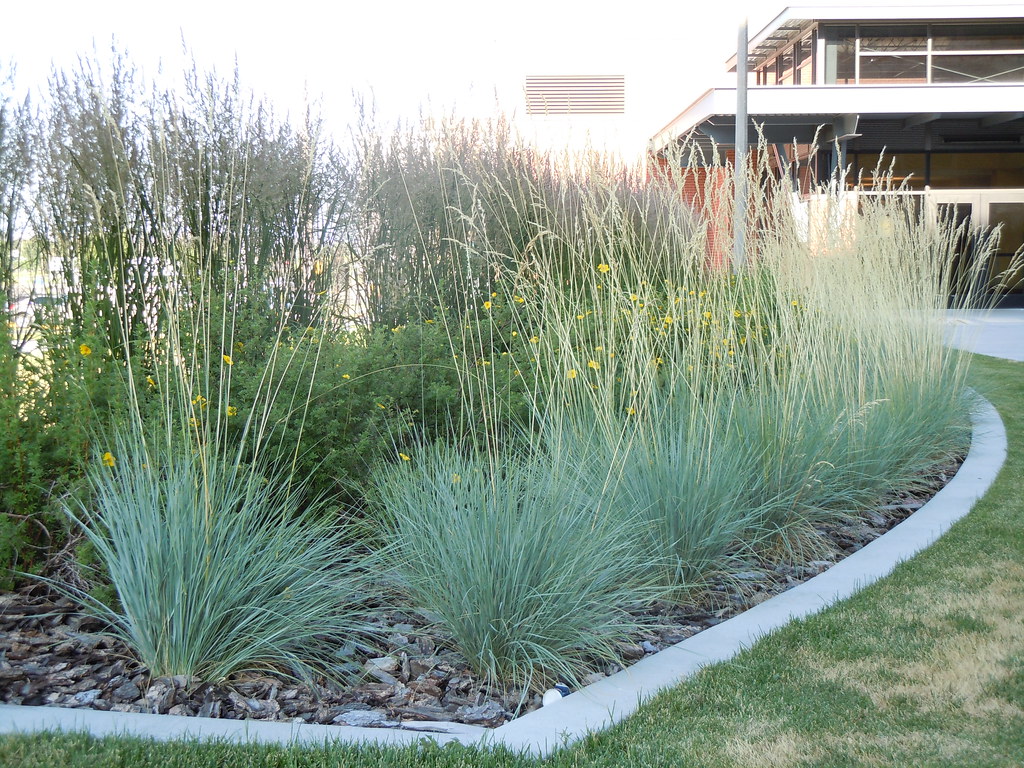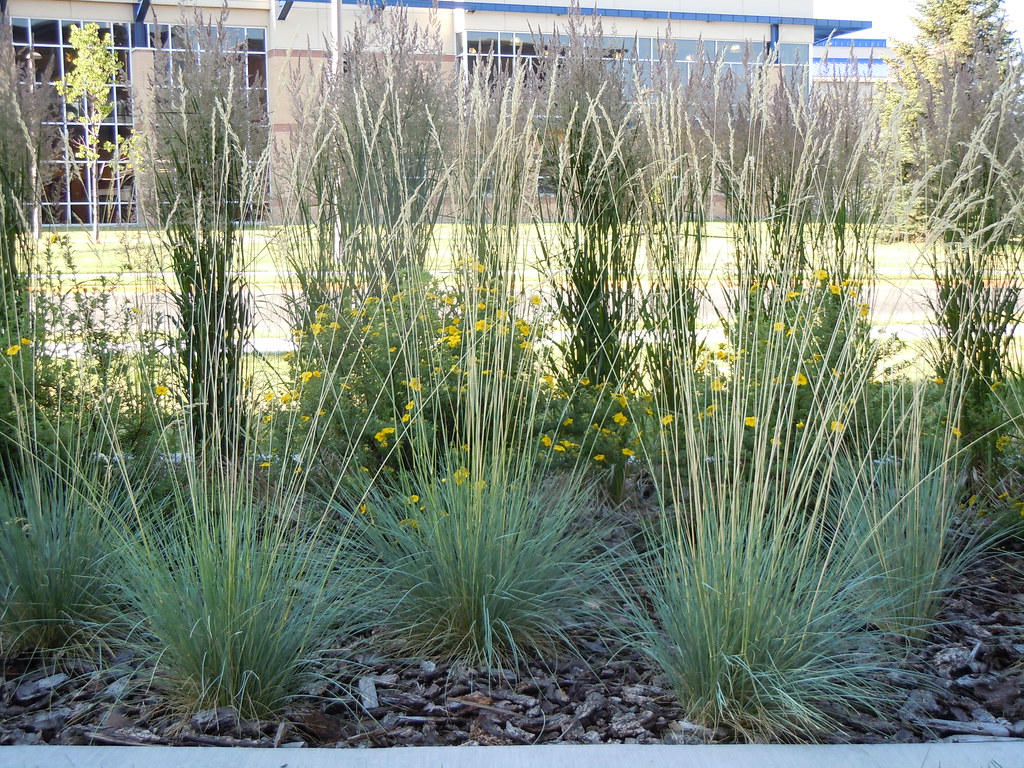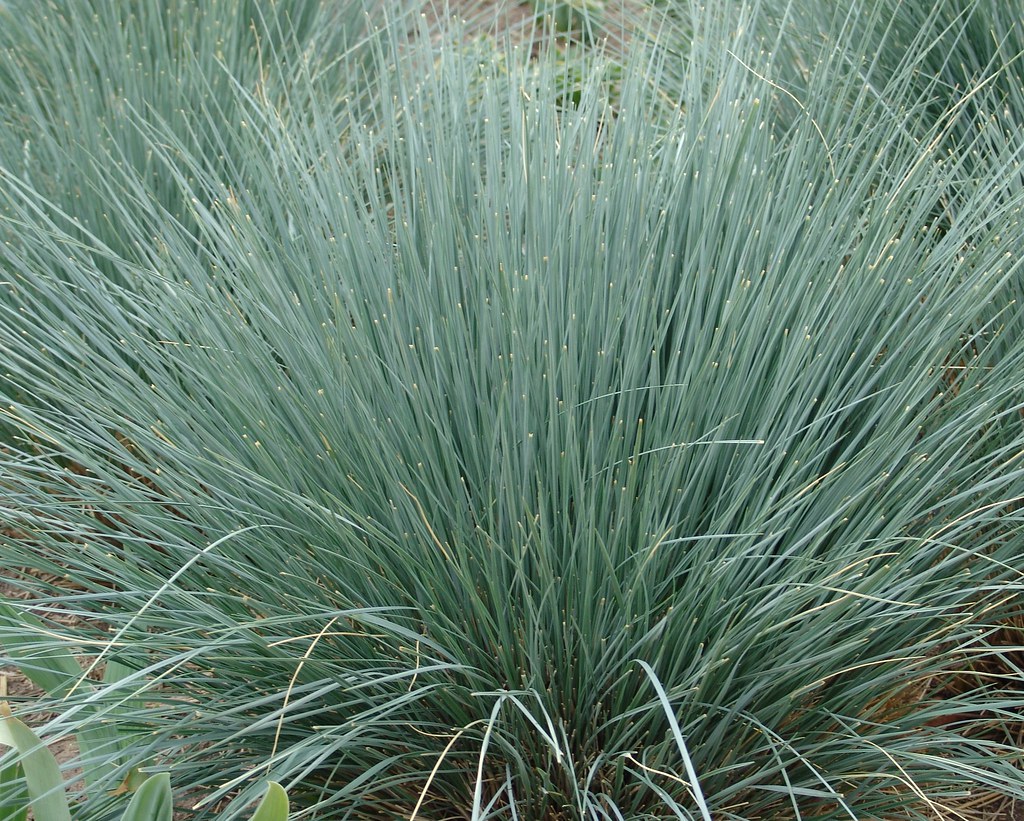Blue Oat Grass, also known as Helictotrichon Sempervirens, is a stunning ornamental grass that adds a touch of elegance and beauty to any garden.
Helicotrichon Sempervirens, also known as blue oat grass, is a flowering plant belonging to the true grass family Poaceae.
It is native to grasslands in central and southwestern Europe. This plant is often used as an ornamental grass in garden design and landscaping. It grows in bunches and has a beautiful blue color.
With its striking blue-gray leaves and graceful, arching habit, it is a popular choice among gardeners who are looking to create a visually appealing and low-maintenance landscape.
Right Location for Blue Oat Grass
Before diving into the process of planting Blue Oat Grass, it is important to choose the right location for it to thrive.
Blue Oat Grass is a sun-loving grass and requires full sunlight to develop its signature blue-gray color. Therefore, find a spot in your garden that receives at least six to eight hours of direct sunlight each day.
Additionally, ensure that the soil is well-draining as Blue Oat Grass does not tolerate wet or waterlogged conditions.
Care for the Soil of Blue Oat Grass
To give your Blue Oat Grass a solid foundation for growth, it is crucial to prepare the soil properly. This grass is adaptable to various soil types, but it prefers sandy or loamy soil that is slightly acidic to neutral in pH.
Before planting, loosen the soil by tilling or digging up the area. Remove any rocks, weeds, or debris that might hinder the growth of the grass.
Incorporating organic matter, such as compost or well-rotted manure, into the soil will improve its fertility and drainage.

Planting Blue Oat Grass
Now that you have chosen the perfect location and prepared the soil, it’s time to plant your Blue Oat Grass. Follow these steps for successful planting:
- Dig a hole that is slightly larger and deeper than the root ball of the grass.
- Gently place the grass in the hole, ensuring that the top of the root ball is level with or slightly above the ground.
- Backfill the hole with the soil, firming it gently around the roots to eliminate any air pockets.
- Water the newly planted grass thoroughly to settle the soil and encourage root establishment.
Watering and Feeding
While Blue Oat Grass is known for its drought tolerance, it is important to provide adequate water during its establishment period.
For the first few weeks after planting, water the grass deeply once or twice a week. Once established, Blue Oat Grass requires watering only during prolonged dry periods or when the soil becomes visibly dry.
When it comes to feeding, Blue Oat Grass is fairly low-maintenance. However, applying a slow-release balanced fertilizer in early spring can promote healthy growth.
Follow the manufacturer’s instructions for the recommended dosage and application method. Avoid over-fertilizing, as it can lead to weak growth and a less vibrant color.
Pruning and Maintenance
Blue Oat Grass is a relatively low-maintenance ornamental grass, requiring minimal pruning and upkeep. Here are some tips to keep your Blue Oat Grass looking its best:
- In early spring, remove any dead or damaged foliage by cutting it back to the base of the plant. This will allow new growth to emerge and maintain the grass’s attractive appearance.
- If the grass becomes overgrown or starts to look untidy, you can rejuvenate it by dividing the clumps. Dig up the plant, carefully separate the clumps, and replant them in their new locations.
- Keep an eye out for pests or diseases, although Blue Oat Grass is generally resistant to most common garden problems. If necessary, treat any infestations or abnormalities promptly to prevent them from spreading.

Using Blue Oat Grass in Garden Design
Blue Oat Grass’s unique color and texture make it an excellent choice for various garden design applications. Here are some ideas to inspire you:
- Create a stunning focal point by planting Blue Oat Grass in containers or large decorative pots.
- Use Blue Oat Grass in borders or edging to add height and visual interest to your garden beds.
- Incorporate Blue Oat Grass in rock gardens or xeriscapes for a low-maintenance and water-wise landscape.
- Combine Blue Oat Grass with other ornamental grasses, perennials, or shrubs to create a dynamic and textured garden display.
Conclusion
In conclusion, Blue Oat Grass is a versatile and visually appealing grass that can elevate the aesthetic of any garden.
By choosing the right location, preparing the soil adequately, and providing proper care, you can enjoy the beauty of this ornamental grass for years to come.
Whether you are new to gardening or an experienced enthusiast, Blue Oat Grass is a fantastic addition to any landscape. So go ahead, and add some grace and elegance to your garden with Blue Oat Grass!
FAQs
What looks good with blue oat grass?
- Blue oat grass pairs well with plants that complement its silvery-blue foliage. Some good companion plants include lavender, yarrow, sedum, Russian sage, and other drought-tolerant perennials.
Is blue oat grass native to California?
- Blue oat grass (Helictotrichon sempervirens) is not native to California. It is native to the Mediterranean region.
Blue oat grass for sale?
- Blue oat grass is commonly available for sale at nurseries, garden centers, and online plant retailers. Check with local suppliers or browse online plant shops.
Blue oat grass vs blue fescue?
- While both blue oat grass and blue fescue (Festuca Glauca) have attractive blue foliage, they are different species. Blue oat grass has a more upright and fountain-like growth habit, while blue fescue typically has a more compact, clumping form.
Blue oat grass height?
- Blue oat grass typically reaches a height of about 2 to 3 feet (60 to 90 cm).
Blue oat grass invasive?
- Blue oat grass is not considered invasive. It is a clump-forming ornamental grass that is well-behaved in garden settings. However, like any plant, it’s essential to monitor its growth and prevent it from spreading into unwanted areas.

